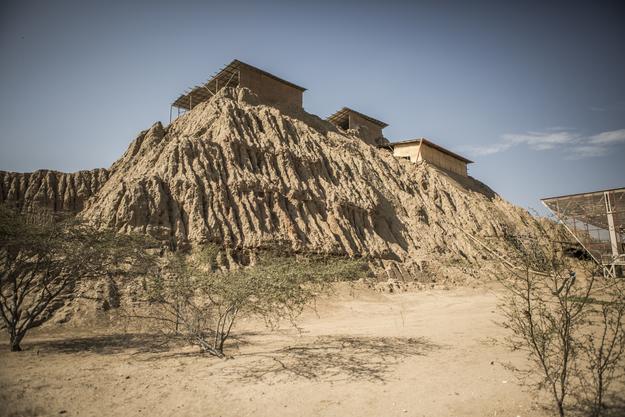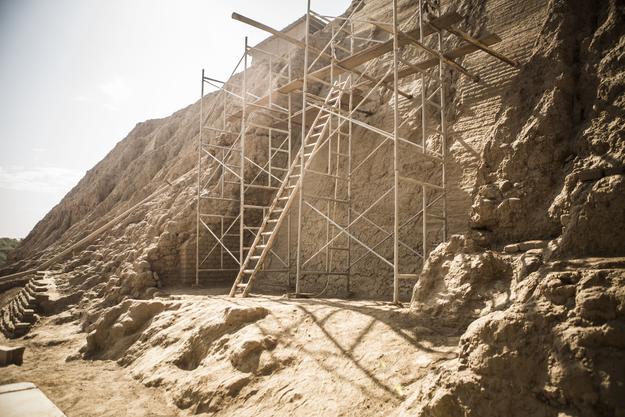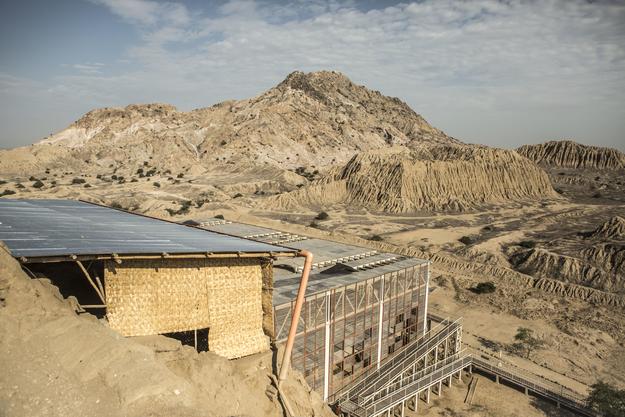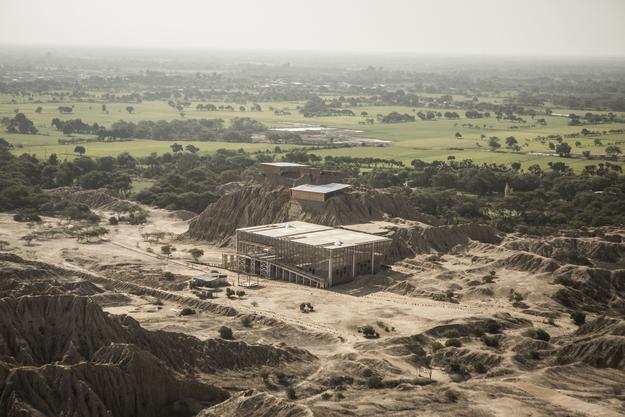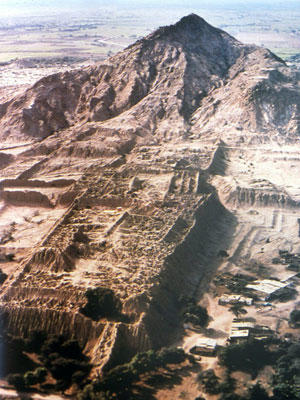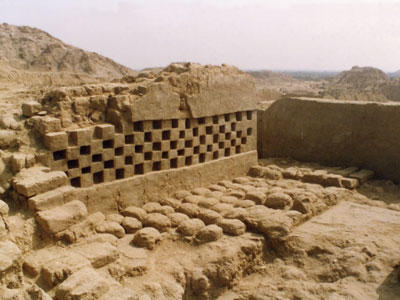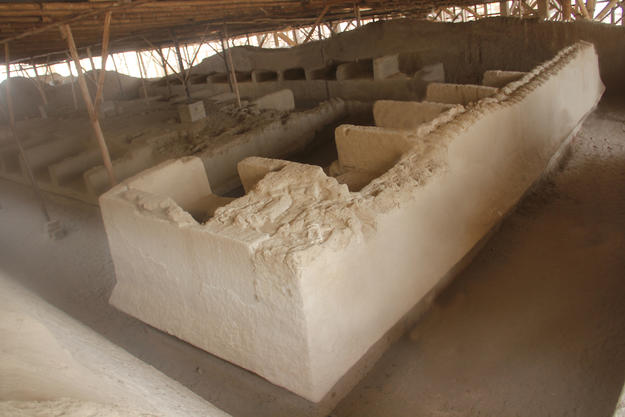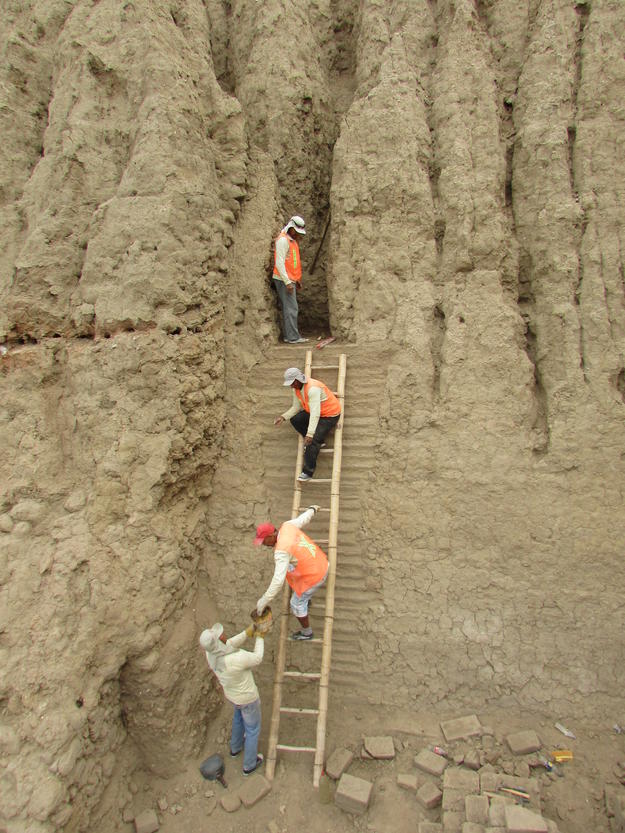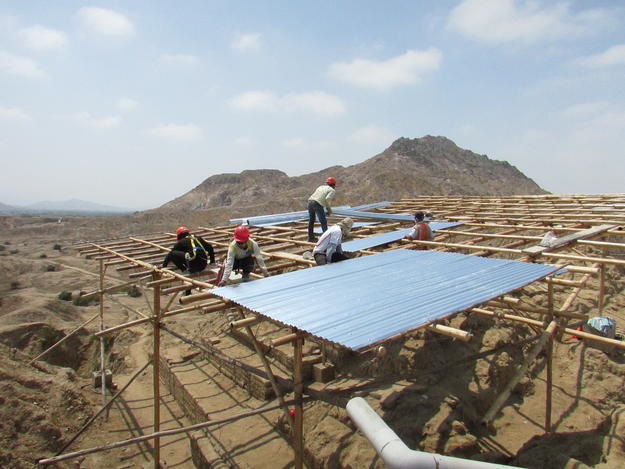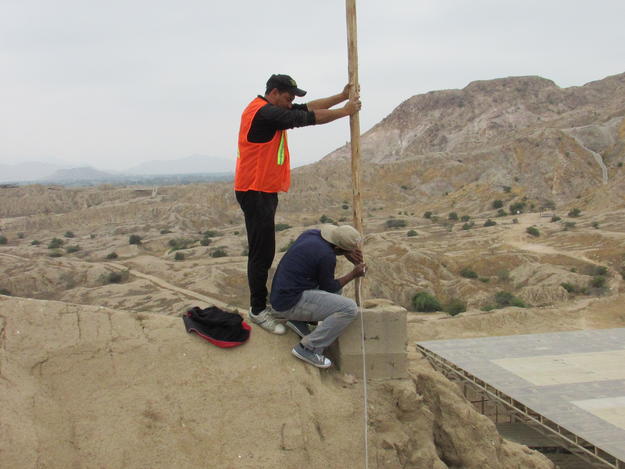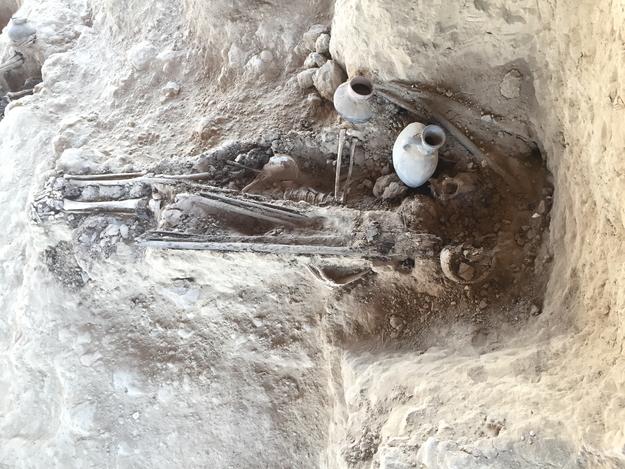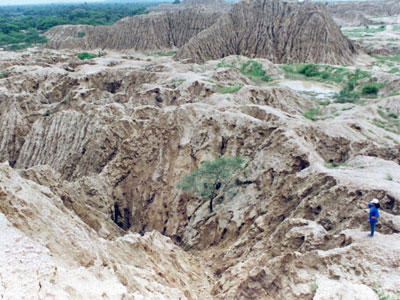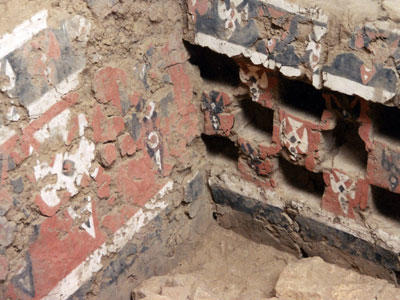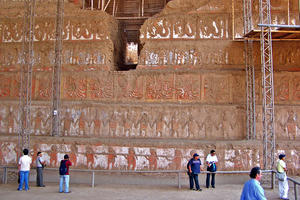Túcume Archaeological Site is located on Peru’s arid north coast and stretches across 221.5 hectares. The ancient settlement was built entirely of mud-brick by the Lambayeque (also known as Sican) culture in the beginning of the tenth century. The site was conquered by the Chimú in the fourteenth century and became part of the Inca Empire in the fifteenth century. The area prospered under the Inca Empire until the arrival of the Spanish in the sixteenth century. The site contains an array of structures of varying sizes, boasting the highest concentration of monumental architecture and the best expressions of mural art in the Lambayeque region.
A combination of simpler buildings, cemeteries, and residential areas are contrasted with monumental architectural structures, including 26 enormous adobe truncated pyramids that were constructed in stages throughout the centuries. The presence of the later cultures –Chimú and Inca– are registered by successive renovations in the architecture and in the recovered cultural associations. During the three periods of occupation, the site constituted the center of political power in the region, one of the richest in the north coast of Peru due to the extension of agricultural productive areas and the security of having water.
Due to the fragility of the construction material, the site is particularly vulnerable to aggressive weather patterns. The site has eroded over the centuries from exposure to the elements and natural disasters. Heavy rains and strong winds have contributed to the deterioration of the site, reducing building volume and damaging painted murals. Protection and maintenance of Túcume are crucial to preserving the legacy of the Lambayeque culture, as well as the other inhabitants of the site. Túcume is part of the "Ruta Moche" tourist route, which also includes Huaca de la Luna in the Moche valley, a major WMF project.
2004 and 2006 World Monuments Watch
Túcume Archaeological Site was included on the World Monuments Watch in 2004 and 2006. In 2004, WMF contributed to the conservation of Huaca Larga, the largest structure on the site measuring 700 meters long.
WMF assisted with archaeological excavations, development of a long-term management plan, and improvement of public access and interpretation at the site. Work included structural consolidation, cleaning, reattachment of loose elements, filling of cracks, removal of graffiti, wall capping, insect infestation control, and documentation.
In 2006, through the Robert W. Wilson Challenge to Conserve Our Heritage, WMF participated in the implementation of conservation and site interpretation work at Túcume. The Backus Foundation contributed toward these efforts, as did Patronato Valle de las Pirámides de Lambayeque. The project, completed in 2008, focused on Platform II of the Huaca Larga section of the site, including the Chimú and Inca temples, and South Plaza. The scope of work consisted of preventive conservation, consolidation of mud surfaces, installation of protective covers, and monitoring. Training of personnel to improve overall stewardship of the site was a critical component of the project. Archaeological excavation and installation of a rain drainage system were carried out with funding from other sources and in coordination with the conservation and interpretation efforts.
Emergency response to El Niño coastal floods in 2017
In early 2017, heavy rains from El Niño caused much damage to the site in the form of excess moisture on walls heads and floors, and the erosion of wall surfaces. Starting in September of that year, emergency works supported by WMF were carried out in three areas of Huaca I: The Hall of Storerooms, the Southern Façade, and in the Upper Platform. Works included the replacement of the temporary shelters that protected the archaeological remains, removal of debris and reinforcement of structures affected by erosion and excess moisture. Conservation of the site prevented further deterioration and loss of material to allow the local population and international visitors to continue to learn about and explore the site’s many treasures.
World Monuments Fund's work at Túcume Archaeological Site was made possible, in part, by support from The Robert W. Wilson Charitable Trust.

